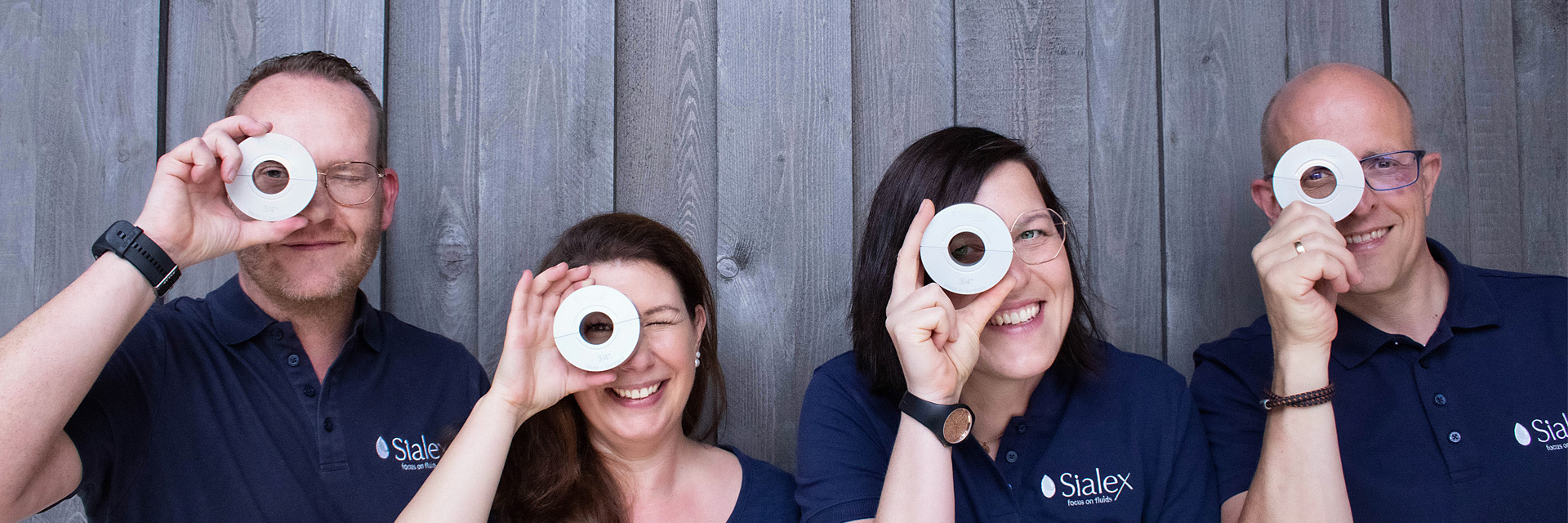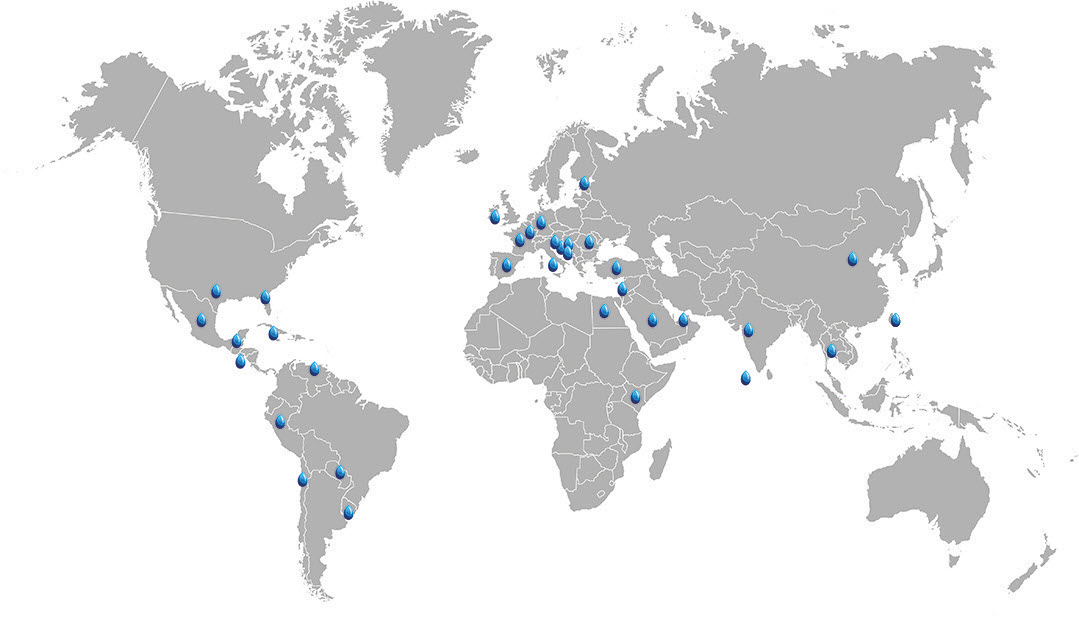
Our water experts
Do you live in a chalky area? Then you certainly know the problems of matt streaks on the shower wall or the hard white crust on the spiral of the kettle. In order to get to the bottom of these deposits, you need a lot of time, constant treatment, and usually chemical cleaners. In this situation, many people think about the classic softening of the water.
On the following pages of this article, you can read what needs to be considered, which aspects play a role here and what the most common methods are:
How hard is my water?
Depending on the region, the degree of hardness of the tap water varies enormously. If you want to act correctly here with regard to the service life of pipelines, handling various household appliances or possible other restrictions, you have to know your degree of hardness. You can usually find out about this on the website of your own municipality or city. If you now have the correct degree of water hardness – you determine it in Germany for example in ‘degrees of German hardness’ – you can, for example, adjust the maintenance interval of the coffee machine to avoid expensive repairs or dose the detergent consumption of the washing machine accordingly.
But what exactly is water hardness? Essentially, the water hardness arises when water passes through soil and rock layers and is determined by two so-called hardness components: magnesium and calcium. The higher these two values are, the harder your water is. However, water hardness is not always a result of natural conditions. Human processing also makes a significant contribution.
The different hardness ranges.
The water hardness is therefore measured in Germany in degrees of German hardness or, more simply, classified into three hardness ranges. The Detergents and Cleaning Agents Act subdivides here into the hardness ranges ‘soft’ (0 to 8.4 degrees German hardness), ‘medium’ (8.4 to 14 degrees German hardness) and ‘hard’ (over 14° degrees German hardness). At least as far as the topic of lime or preventive lime treatment is concerned, you should start thinking more seriously from the ‘medium’ hardness range. In the lower area (soft), on the other hand, it is possible, for example and as a rule, even to do without fabric softener when washing the clothes. Very high hardness range, i.e. from 14 °dH, is particularly responsible for the unsightly and also damaging limescale deposits.
In order to avoid device-damaging deposits on household appliances, it is still a very common method to have a traditional decalcification system installed by the local plumber. With the help of these quite expensive and maintenance-intensive systems, the magnesium and calcium ions are exchanged for sodium ions. Attention: Depending on the degree of hardness in your region, consumables in the form of regeneration salt are required in a not negligible quantity!
Essentially, calcium is responsible for the depositing of lime and the water hardness also decreases as a result of the ion exchange within these decalcification systems. In short: The water becomes significantly softer and ultimately ensures that there are hardly any limescale deposits in your water pipes and appliances such as dishwashers, coffee machines and washing machines. But softer water due to sodium ions is many times more aggressive. Very often you solve one problem, but immediately generate a new one. If you still have water pipes made of metal, these are now much more susceptible to corrosion due to the more aggressive, soft water from the decalcification system.
The expensive burst pipe and many associated inconveniences are therefore almost predictable.
Hesse and Odenwald region: How is the lime in the water here?
In Hesse, the average water hardness is around 17 °dH. The water hardness varies between 2 and 40 °dH, depending on the region. The need for decalcification systems or other lime treatment methods also varies considerably.
In the Odenwald, the water hardness corresponds to a value of about 9.1 °dH and is therefore in the medium hardness range. The dosage for washing machines and dishwashers should be made here, but also in all other parts of Germany where the water is quite soft, according to the manufacturer’s instructions for soft water. You can quickly save many euros per month here. However, the amount can be adjusted at any time if necessary.

How does limescale in water affect skin and hair?
One thing is clear: Hard water is not ideal for body care. The increased concentration of magnesium and calcium ions usually leads to hair becoming dull and dead. In addition, the hair tangles more easily. The minerals really stick to the hair and let it dry out. Even the consumption of shampoo or soap increases enormously, since the minerals from the water combine with the cleaning agent and thus neutralize it. This has the effect that it no longer foams as it should, which increases the consumption of the cleaning agent. In addition, daily body care should also depend on the degree of hardness of the water, because the typical consequences of hard water are tension and itching on the skin. In addition, lime promotes skin diseases such as neurodermatitis or eczema. This is because hard water makes the skin look brittle and dry out more quickly.
So if you are struggling with such health problems, you should treat and prepare your water accordingly!
Is hard water bad for your health?
You can rest assured that hard water has absolutely no harmful effects on a person’s health. On the contrary: Lime mainly consists of magnesium and calcium and these two minerals are important for our body!
In terms of health, it is therefore absolutely not necessary to chemically decalcify water or to remove important components from tap water. Especially since the German tap water is one of the best controlled foodstuffs and can be drunk without hesitation.
How bad is limescale for water bearing devices?
Limescale is a major problem, especially for household appliances that use warm or hot water. Heating or evaporating the water can lead to long-term limescale deposits and thus impair the functionality of the devices. This, in turn, results in higher energy consumption with sometimes significantly higher costs. So if you don’t do anything about the limescale deposits, a device will slowly but surely become a “power slugger” or break down.
The following devices in your household are particularly affected by limescale in the water:
- Washing machine
- Boiler
- Iron
- Kettle
- Dishwasher
- Coffee maker
If you use some of these devices frequently, you should think carefully about proactive prevention of limescale deposits, because waiting too long can result in expensive repairs, high electricity bills or even the purchase of a new device!
How can I decalcify or soften my water?
There are, of course, a variety of methods to get lime-free and therefore soft water. Either very rudimentary with the boiling method, but also with a reverse osmosis system or an ion exchanger. A lot is possible. The question, of course, is how much money do you want to invest?
Descale water by boiling:
Certainly the most cumbersome method of obtaining soft water: Boiling it. Bring the water to a boil using a saucepan or kettle. After that, let it cool down and the lime will settle to the bottom. Run the boiled water through a coffee filter and boil it again. If you repeat this process several times, you get lime-free and soft water for tea or coffee.
Descale water using a reverse osmosis system:
Reverse osmosis is a natural water filtration process. In osmosis, liquids separated by a semi-permeable membrane strive to equalize ion concentrations. In “reverse” operation, the tap water is pressed against a synthetic membrane with the local line pressure. Only very small water molecules pass through the membrane. Other ‘undesirable’ ingredients such as lime, nitrate, viruses and bacteria but also chlorine, heavy metals, plasticizers, pesticides and drug and hormone residues are retained due to their size. According to various manufacturers, almost 100% purification of the drinking water should be carried out by reverse osmosis.
Descale water using an ion exchanger:
Within an ion exchanger, normal domestic water flows over polystyrene-based synthetic resin – a substance that comes from the food industry. The calcium and magnesium components present in tap water penetrate the resin and are bound there. The rest of the water takes its usual route via water pipes and boilers to the tap. Only soft water gets there, i.e. water with very little or no lime content. Since the resin in the ion exchanger can only absorb a limited amount of lime before its capacity is exhausted, the bound lime must be removed from the resin of the ion exchanger. Salt is used here, or rather so-called regeneration salt. Newer water softeners do this automatically. In addition, brackish water flows through the ion exchanger, which has the further consequence that the previously bound lime can now be released from the resin. The resulting mixture of water, salt and lime then flows into the wastewater. Depending on the region (water hardness), water consumption and type of water softener, this process takes place approximately once a week. The resin is then regenerated in the ion exchanger, i.e. ready to adsorbe lime again. It is therefore imperative to always refill a storage tank installed in the decalcification system with salt.
It should be understandable for everyone that such an increase in the sodium content in the water automatically leads to negative side effects. In some regions of the world, the use of these classic decalcification systems is already regulated in order to reduce the salt pollution of the soil and water.
Conclusion:
In order to take the water hardness out of your hard water, you can fall back on so-called water softening systems in a classic and very traditional way. These usually do their job conscientiously and safely, but they are also quite an expensive pleasure. The initial purchase, including installation by a specialist, but also the monthly consumables (approx. 150 kg of regeneration salt per year with an average water consumption of a 1-family house) quickly add up to several thousand euros. Apart from the lack of sustainability, some other negative side effects!
But is that really the right or even the only solution?
Limescale in tap water is – as already mentioned – not fundamentally harmful; and there are other solutions to take away the damaging effect of the lime!
Our urgent tip: Look around for sustainable alternatives.
The so-called Sialex®Ring, from the German Phoenix Ring Manufaktur GmbH based in Erbach in the Odenwald, is more than just an alternative to traditional decalcification systems. The Sialex®Ring uses well-known physical principles and works completely without chemicals and energy, is absolutely environmentally friendly, maintenance-free and proven without any side effects.
By using the scientifically proven Sialex® technology, it is possible to remove limescale in the water and change it in a positive way. From now on, the lime no longer settles in the coffee machine, dishwasher, kettle or the water pipes and even existing lime is gradually broken down.
Although the water does not lose its hardness through the use of a Sialex®Ring, the water feels like it has the popular property of soft water. Important ingredients such as calcium and magnesium also remain in the water and are not filtered out as in the chemical decalcification systems described above.
The Sialex®Ring is not only highly effective, but also a real problem solver in the truest sense of the word! And not only for the private user, but above all for the industry.
Do you still have questions about the Sialex®Ring? Contact us today and install it in your own four walls!
